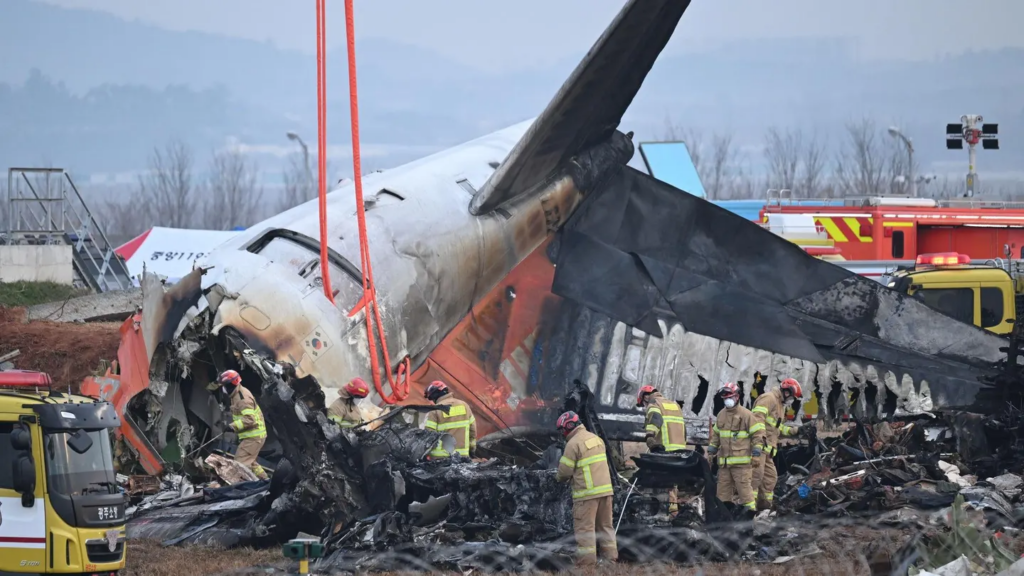January 13, 2025 by Thomas Isenovski (‘26)
Now that 2024 is now behind us, a brand-new year has begun. But in the aviation world, the year of 2024 did not end very smoothly, and quite literally, skidded to an end.
In the time span between December 25 and January 1, there was a series of catastrophic aviation accidents, some much more severe than others, that killed hundreds of people in the waning days of 2024.
On December 25th, 2024, an Azerbaijan Airlines Embraer 190AR, was en route to Grozny, Russia from Baku, Azerbaijan, when it was struck and severely damaged by a Russian Anti-aircraft missile. The plane eventually crashed near Aktau, Kazakhstan, after attempting to divert. 38 of the 67 passengers and crew on board were killed in the crash. Large scale investigations have taken place since the incident, but a probable cause would be a Russian Anti-Aircraft system mistaking the plane for a UAV (unmanned aerial vehicle). One possible mistake is there had been Ukrainian drone strikes reported in the area where the plane was struck.
4 days later, on December 29th, 2024, 2 more incidents occurred, one of them being the deadliest aviation incident in over 7 years. A KLM Airlines flight, a Boeing 737-800, bound for Amsterdam from Oslo, diverted and made an emergency landing after “a loud noise was heard”. The plane was able to successfully land, but suddenly veered and skidded off the runway completely off the tarmac. The pilots were recorded reporting that they had no hydraulic control of the aircraft before the emergency landing. Luckily, all passengers on board were uninjured.
On the same day, another Boeing 737-800, operated by Jeju Airlines, was en route to Muan International Airport in South Korea from Bangkok, Thailand. The plane encountered a bird strike on its first approach into the airport and was forced to abort and execute a go-around. On its second approach, the landing gear did not deploy, and the aircraft performed a “belly landing”, in an area well beyond the normal touchdown zone for an aircraft of its kind. The aircraft went skidding down the runway, its bare fuselage sliding against the tarmac. The Aircraft was like a skating death tube. After 250 meters, the plane slammed into a concrete retaining wall, killing 179 passengers and crew and leaving only 2 surviving crew members. Since the crash, some have argued that the retaining wall that the plane crashed into should have been placed farther back, or not even been there at all.
These catastrophic 2 incidents raised even more questions and concerns about Boeing, given the same plane was involved in both accidents, and fueling the ongoing controversy about the track record of the American Manufacturer. Boeing, on January 5, started with a decompression of an exit door, resulting in injuries, but ended the year with a disaster.
Boeing shares dropped over 2% on the day of the crash, along with other major drops in shares among Asian airline companies, including Jeju Airlines.
The crash was the deadliest Aviation incident since Lion Air Flight 610 in 2018, which killed 181. The Aircraft involved. The Boeing company has now been under even more scrutiny for its safety culture, as this most recent accident has added to the aircrafts’ list of incidents including 2 major crashes in 2018 and 2019 (Ethiopian Flight 302, Lion Air Flight 610) which killed a combined 338 people.
2024 was a hard year for the aviation industry, and this particular week to end 2024 was brutal. With the Boeing accusations in full swing, and an increased number of incidents, some are feeling less inclined and more scared to fly on Boeing flights entering 2025. Some are even boycotting the company.
Hopefully 2025 will bring complete closure and answers for these tragic accidents and bring more innovation and flight safety procedures to decrease the chances of more incidents in the future.


Sources:
Jeju Air plane crash in South Korea: What to know | AP News
Jeju Air Crash: What We Know About Fatal South Korea Plane Crash
KLM Royal Dutch Airlines Boeing flight skids off runway in Norway after hydraulic failure
Photos from Azerbaijan jet crash suggest a missile strike, according to experts : NPR
